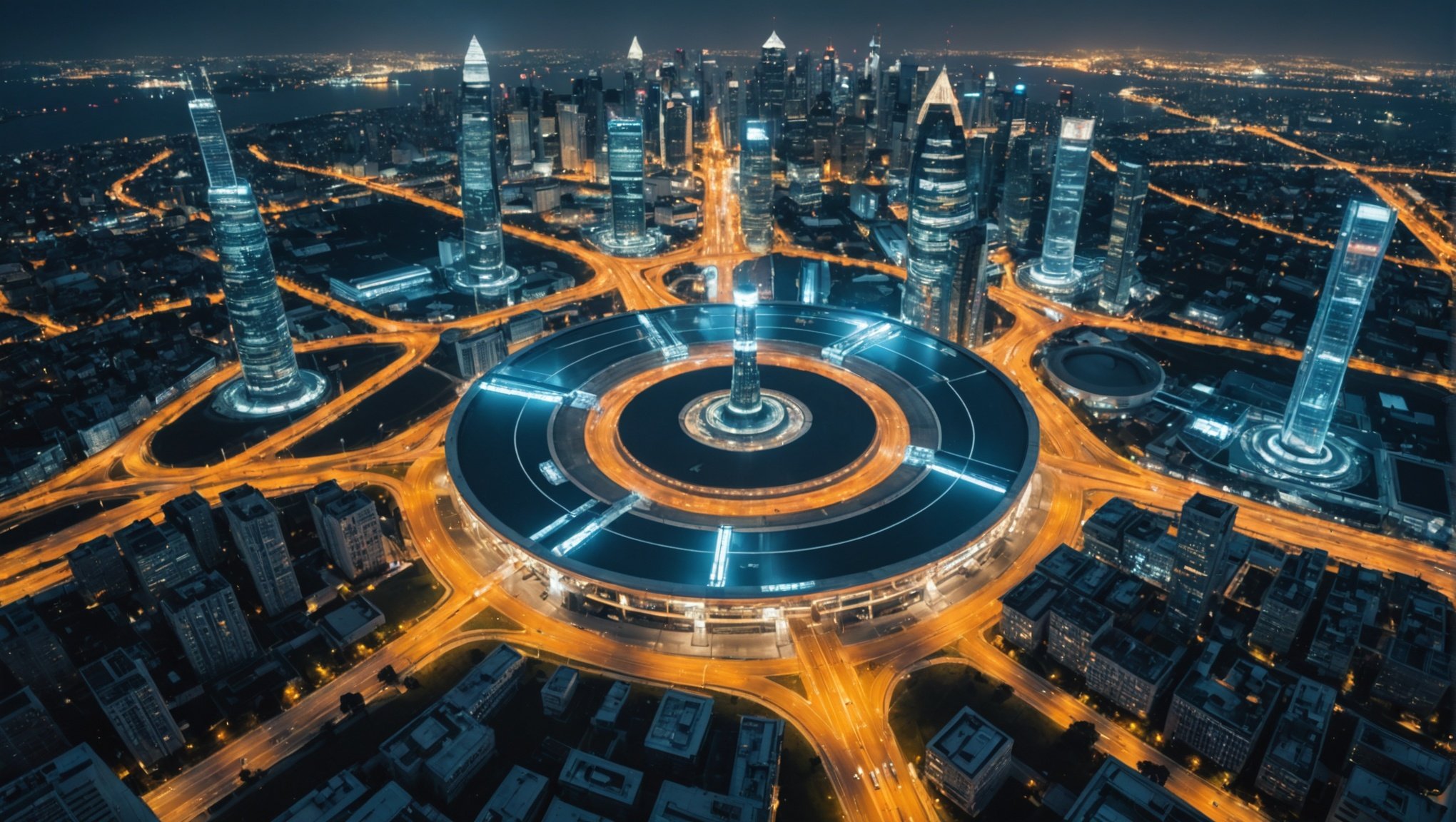Unlocking Cyber Resilience: Harnessing AI to Fortify Critical Infrastructure Security
In the ever-evolving landscape of cybersecurity, the integration of artificial intelligence (AI) has become a crucial component in enhancing the security and resilience of critical infrastructure. As cyber threats grow in sophistication and frequency, organisations must adapt and leverage cutting-edge technologies to protect their digital assets. Here, we delve into the ways AI is revolutionizing cybersecurity, the best practices for implementing AI-driven security solutions, and the future challenges and trends in this field.
The Role of AI in Cybersecurity
AI, particularly through machine learning and generative AI, has transformed the cybersecurity landscape by enabling proactive and real-time threat detection and response. Here are some key ways AI is making a significant impact:
In parallel : Essential Steps to Build a Resilient Cybersecurity Framework for Fintech Applications
Threat Detection
AI-powered threat detection systems can analyze vast amounts of data to identify patterns, anomalies, and behavioral changes that may indicate a cybersecurity incident. For instance, AI can detect malware, viruses, and phishing attacks by analyzing network traffic and system logs in real-time, alerting security teams to take immediate action.
User Behavior Analysis
AI can monitor user behavior to identify insider threats or unauthorized access. By analyzing login activities, file access, and network usage, AI-powered user behavior analytics can flag suspicious activities that may pose security risks, thereby preventing data breaches.
This might interest you : Unlocking AI: Revolutionizing Malware Detection in Cybersecurity
Vulnerability Assessment
AI can conduct automated vulnerability assessments to identify potential weaknesses in IT systems, networks, and applications. These assessments help prioritize exposures, allowing security teams to take proactive measures to mitigate risks before they are exploited by cybercriminals.
Security Automation and Orchestration
AI-powered security automation and orchestration platforms can automatically detect, analyze, and respond to security incidents. This reduces response time and minimizes the impact of cyber attacks, ensuring that organisations can maintain continuous operations even during an attack.
Best Practices for a Secure AI Framework
Implementing AI in cybersecurity requires a robust and well-thought-out framework to ensure the security and resilience of AI systems themselves. Here are some best practices to consider:
Robust Model Architecture
Building resilient AI models starts with security from the ground up. This involves implementing defense mechanisms against potential attacks at the development stage, beginning with the training dataset. Ensuring the integrity and security of the data used to train AI models is crucial to preventing unintended consequences or attacks.
Encryption and Secure Communication
Data transmission within AI systems must be secure. Encryption is essential in safeguarding communication within AI software, preventing unauthorized access to sensitive data. Secure communication protocols ensure that data remains protected both in transit and at rest.
Continuous Monitoring and Auditing
Real-time monitoring and regular audits are vital for detecting anomalies or suspicious activities within AI systems. These audits provide a systematic approach to assess and enhance the overall AI infrastructure security, ensuring a proactive stance against potential exposures.
Threat Detection and Response Automation
Automated security operations centers powered by AI can tirelessly scan for security vulnerabilities and respond swiftly to emerging threats. This automation includes automated incident response, which minimizes downtime and provides a faster response than manual interventions.
Continuous Vulnerability Assessment and Automated Remediation
Proactive identification of weaknesses through continuous vulnerability assessments is crucial. Automated systems can identify and remediate potential risks quickly, providing a robust shield against cyber threats and ensuring that the security posture remains strong.
Case Studies and Partnerships
Several organisations are already leveraging AI to enhance their cybersecurity posture. Here are a few notable examples:
Cognizant and Palo Alto Networks Partnership
Cognizant has partnered with Palo Alto Networks to deliver AI-driven cybersecurity services. This partnership combines Cognizant’s cybersecurity expertise with Palo Alto Networks’ industry-leading AI-powered platforms. The collaboration aims to help clients consolidate security products, reduce complexity, and improve overall security levels through platformization. For instance, their SecureNXT Access offering revolutionizes zero-trust network security with seamless, AI-powered protection.
NetApp’s Intelligent Data Infrastructure
NetApp’s intelligent data infrastructure provides multi-layered protection at the data layer, regardless of where the data resides. This approach streamlines data management and fortifies cybersecurity, as seen in their partnerships with the TAG Heuer Porsche Formula E Team and Ducati, where they delivered security, speed, and flexibility through their data infrastructure solutions.
Future Challenges and Trends
As we look ahead to 2025 and beyond, several trends and challenges will shape the cybersecurity landscape.
Zero-Trust Architecture
There is a significant shift from traditional perimeter-based security models to zero-trust architectures. This model assumes that no one within or outside a network can be trusted by default, requiring continuous verification and monitoring. Companies like Zscaler are already adopting this approach to adapt to the challenges of remote work and hybrid environments.
Cloud Services Unification
Navigating multiple cybersecurity solutions is becoming increasingly complex. Unified platforms designed to secure access across cloud services are emerging, offering scalability, flexibility, and centralized management. This approach alleviates operational strain on cybersecurity teams and ensures efficient security management across cloud assets.
Post-Quantum Cryptography
With the advent of quantum computing, traditional encryption schemes are at risk of being broken. Organisations must develop crypto-agile infrastructures to adapt to new algorithms and prepare for transitions in public key infrastructure. Conducting a comprehensive inventory of the current cryptographic landscape and monitoring NIST standards for post-quantum cryptography are critical steps.
Practical Insights and Actionable Advice
To enhance cyber resilience, organisations should consider the following practical insights and actionable advice:
Conduct Regular Vulnerability Assessments
Regular vulnerability assessments help identify potential weaknesses before they can be exploited. This proactive approach ensures that security teams can take timely measures to mitigate risks.
Implement AI-Powered Threat Detection
AI-powered threat detection systems can identify threats in real-time, allowing for swift response and mitigation. This is particularly effective in detecting anomalies and behavioral changes that may indicate a cybersecurity incident.
Adopt Zero-Trust Architecture
Zero-trust architectures provide a more dynamic and secure approach to cybersecurity. By assuming that no one within or outside the network can be trusted, organisations can ensure continuous verification and monitoring, enhancing overall security posture.
Foster Collaboration and Employee Awareness
Cybersecurity is not just a technical issue but also a human one. Fostering a culture of cybersecurity awareness among employees and collaborating with government initiatives are crucial steps in building a resilient cybersecurity strategy.
Table: Comparing AI-Powered Cybersecurity Solutions
| Solution | Key Features | Benefits | Examples |
|---|---|---|---|
| Threat Detection | Real-time anomaly detection, behavioral analysis | Swift response to emerging threats, reduced downtime | Palo Alto Networks Precision AI |
| User Behavior Analysis | Monitoring login activities, file access, network usage | Identification of insider threats, prevention of data breaches | BigID AI-powered user behavior analytics |
| Vulnerability Assessment | Automated vulnerability assessments, prioritization of exposures | Proactive risk mitigation, enhanced security posture | NetApp’s intelligent data infrastructure |
| Security Automation and Orchestration | Automated incident response, continuous monitoring | Reduced response time, minimized impact of cyber attacks | Cognizant’s SecureNXT SOC |
| Zero-Trust Architecture | Continuous verification and monitoring, default distrust | Enhanced security posture, adaptation to remote work and hybrid environments | Zscaler’s zero-trust model |
Quotes from Industry Experts
- “In the enterprise security space, AI presents an opportunity to augment human efforts and drive modernization to keep pace with evolving threats, which are also increasingly AI-driven,” – Ravi Kumar S, CEO, Cognizant.
- “With Palo Alto Networks Precision AI, we can unlock transformative outcomes in cybersecurity. And as the threat landscape evolves, platformization will be a crucial enabler for AI to deliver more powerful, effective insights.” – Nikesh Arora, Chairman and CEO, Palo Alto Networks.
- “Cyber resilience is more than recovery; it is ensuring your operations continue seamlessly, even amidst a cyberattack.” – Pradeep Eledath, Partner, Technology Consulting, EY India.
Harnessing AI to fortify critical infrastructure security is no longer a luxury but a necessity in today’s digital landscape. By implementing robust AI frameworks, adopting best practices, and staying ahead of future trends and challenges, organisations can significantly enhance their cyber resilience. As AI continues to evolve, it is clear that its integration into cybersecurity strategies will be pivotal in protecting against the sophisticated and ever-evolving cyber threats of the future.
In the words of Ravi Kumar S, “AI presents an opportunity to augment human efforts and drive modernization to keep pace with evolving threats.” By embracing this opportunity, organisations can ensure their digital assets remain secure, resilient, and ready to face the challenges of an increasingly complex cyber world.











